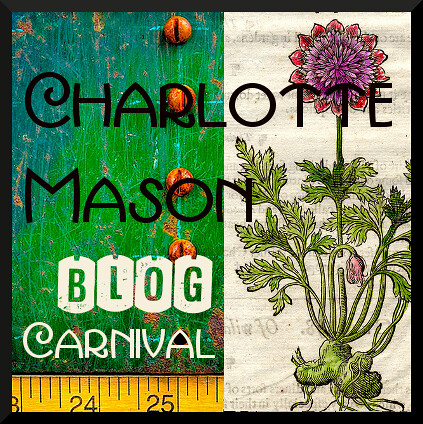In reality, it can be one or all of those, can't it?
'Tis all about making acquaintance with the natural world. as with most relationships, first hand encounters are always of the highest value, yet, secondhand is next best. When you get on down the line to third and fourth hand accounts, that's when stories begin to lose their savoriness, so we'd be best served sticking with our own eyes or at least the accounts of informed eyewitnesses. In that case then, part of nature study will include books on natural history as well as pictorial guides. Honestly though, nothing will replace time spent getting to know the things and the places we find them in, outside.
What do you know of Charlotte Mason's take on out-of-door life? Here are some juicy interesting bits... there is so much more that you can read here.
On the Value of Nature Study.
It would be well if we all persons in authority, parents and all who act for parents, could make up our minds that there is no sort of knowledge to be got in these early years so valuable to children as that which they get for themselves of the world they live in. Let them once get touch with Nature, and a habit is formed which will be a source of delight through life. We were all meant to be naturalists, each in his degree, and it is inexcusable to live in a world so full of the marvels of plant and animal life and to care for none of these things.
Consider, too, what an unequalled mental training the child-naturalist is getting for any study or calling under the sun––the powers of attention, of discrimination, of patient pursuit, growing with his growth, what will they not fit him for? Besides, life is so interesting to him, that he has no time for the faults of temper which generally have their source in ennui; there is no reason why he should be peevish or sulky or obstinate when he is always kept well amused.
On Flowers.
Milkwort, eyebright, rest-harrow, lady's-bedstraw, willow-herb, every wild flower that grows in their neighbourhood, they should know quite well; should be able to describe the leaf––its shape, size, growing from the root or from the stem; the manner of flowering––a head of flowers, a single flower, a spike, etc. And, having made the acquaintance of a wild flower, so that they can never forget it or mistake it, they should examine the spot where they find it, so that they will know for the future in what sort of ground to look for such and such a flower.
On Trees.
Children should be made early intimate with the trees, too; should pick out half a dozen trees, oak, elm, ash, beech, in their winter nakedness, and take these to be their year-long friends. In the winter, they will observe the light tresses of the birch, the knotted arms of the oak, the sturdy growth of the sycamore. They may wait to learn the names of the trees until the leaves come.
On Living Creatures.
Then, as for the 'living creatures,' here is a field of unbounded interest and delight. The domesticated animals are soon taken into kindly fellowship by the little people. Perhaps they live too far from the 'real country' for squirrels and wild rabbits to be more to them than a dream of possible delights. But surely there is a pond within reach––by road or rail––where tadpoles may be caught, and carried home in a bottle, fed, and watched through all their changes––fins disappearing, tails getting shorter and shorter, until at last there is no tail at all, and a pretty pert little frog looks you in the face.
On the Calendar of Firsts.
It is a capital plan for the children to keep a calendar––the first oak-leaf, the first tadpole, the first cowslip, the first catkin, the first ripe blackberries, where seen, and when. The next year they will know when and where to look out for their favourites, and will, every year, be in a condition to add new observations. Think of the zest and interest, the object, which such a practice will give to daily walks and little excursions. There is hardly a day when some friend may not be expected to hold a first 'At Home.'
On the Nature Journal.
As soon as he is able to keep it himself, a nature-diary is a source of delight to a child. Every day's walk gives him something to enter: three squirrels in a larch tree, a jay flying across such a field, a caterpillar climbing up a nettle, a snail eating a cabbage leaf, a spider dropping suddenly to the ground, where he found ground ivy, how it was growing and what plants were growing with it, how bindweed or ivy manages to climb.
Innumerable matters to record occur to the intelligent child. While he is quite young (five or six), he should begin to illustrate his notes freely with brush drawings; he should have a little help at first in mixing colours, in the way of principles, not directions... A child of six will produce a dandelion, poppy, daisy, iris, with its leaves, impelled by the desire to represent what he sees, with surprising vigour and correctness.
He should not be told to use now this and now that, but, 'we get purple by mixing so and so,' and then he should be left to himself to get the right tint. As for drawing, instruction has no doubt its time and place; but his nature diary should be left to his own initiative.
On Field Guides & Natural History Books.
The real use of naturalists' books at this stage is to give the child delightful glimpses into the world of wonders he lives in, to reveal the sorts of things to be seen by curious eyes, and fill him with desire to make discoveries for himself. There are many* to be had, all pleasant reading, many of them written by scientific men, and yet requiring little or no scientific knowledge for the enjoyment.
Please feel free to share the following image in your post and inviting your readers to come on over and join us, too? The more the merrier!! :)

Quotes used with permission from Volume One of Charlotte Mason's Homeschooling Series, made available for your online reading enjoyment by AmblesideOnline.org.
















2 comments:
Definitely something to share with my friends who are new to nature study a la Charlotte Mason!
Yikes, I want to do a Calendar of Firsts consistently and have never pulled it off. I do like that phrase in CM's quote that the Calendar is a "capital plan." I'm going to work that phrase into a conversation soon, just for the fun of it (and maybe it will remind to keep up our Calendar of Firsts!).
Post a Comment